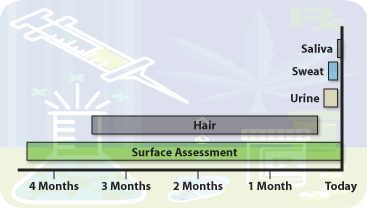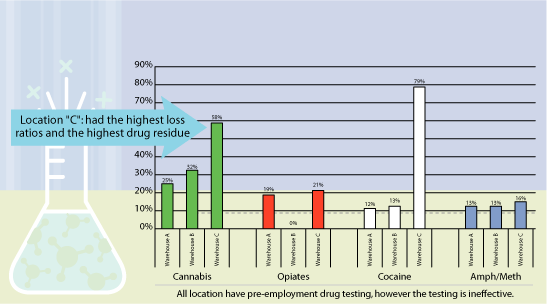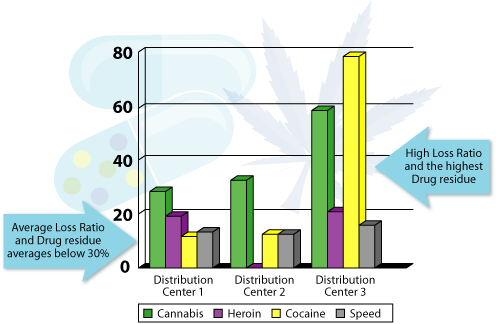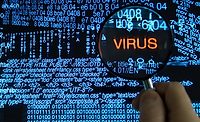
Despite the risks, security managers often grapple with how to protect their businesses from the risk of drug use at work. To some, drug testing and its commonly used methods, like urine or hair testing, are considered too invasive and cost prohibitive to be practical.
Because of these factors, drug detection companies have been developing a new form of drug testing that allows traces of illegal drugs to be detected on surfaces, such as phones, furniture and even employee uniforms. Such so-called “surface testing” methods take employees out of the equation by allowing security managers to test only company-owned surfaces and evaluate their overall drug risk. Rather than immediately pinpointing individual employees, surface tests are generally designed to give a clear picture of the overall drug use and drug trafficking exposures in a facility by identifying the intensity, type and location of illegal drug activity.
“Surface testing allowed us to easily determine whether we even had an illegal drug problem,” said the vice president of loss prevention for one major furniture retailer. “We were surprised at how widespread the drug contamination was throughout our facilities and are now using that information to deter drug use through a pre-employment and spot-testing program.”
Although surface testing has only recently become available to the private sector, it has been used by federal agencies like the DEA, FBI and U.S. Customs for several years. The methodology has also been used in the European Union, mostly in roadside tests for impaired drivers and official police work. The results have been so reliable that the method is considered to return zero false positives – even more accurate than the best drug-sniffing dogs.
In addition, surface testing does not end at detecting the presence of illegal drugs. Although that application is the most common, the methodology can also be used to detect other dangerous substances such as explosives, infectious diseases and bio-terrorism agents.

How it works
The concept behind surface testing is actually quite simple; when a person consumes or handles an illegal drug, traces of the drug residue are left behind on anything that person touches. If the narcotics are ingested, the product is excreted from the body via urine, saliva and sweat. Therefore, the user leaves behind detectable traces of the drug on any surface that he or she touches, which can then be picked up and identified.
This is superior to invasive methods, which can only determine whether a person is using drugs, not trafficking them. It is also possible for drug users to tamper with urine samples. However, for an employee to remove or tamper with all traces of drugs on a surface would be quite a feat. And, while drugs will only stay in the body for several hours, they will linger for weeks on surfaces.

substance testing showed the highest level of use.
Using the same testing concepts as for illegal drugs, surface testing can be used to find and identify other invisible traces of substances, including explosives, infectious diseases, bio-terrorism agents and the overuse of prescription drugs. It is nearly impossible for people who use, carry or handle these substances to avoid leaving microscopic traces behind on clothing or surfaces.
For explosives, agents such as TNT and RDX can be detected all the way down to the picogram level – one-trillionth of a gram. Surface testing can also detect the presence of the Adenovirus, a highly contagious infection that causes pink eye, intestinal and respiratory infections. Detecting Adenovirus on a surface usually indicates inadequate sanitary conditions in places like doctors’ offices, hospitals and nursing homes.
Also, some European countries are now developing surface testing methods to protect against terrorist threats. For nearly a decade, Europeans have deployed small, sophisticated biosensors, which are now on the cutting edge of detecting substances such as Mustard blistering agents. Although this practice is not yet widely available in the U.S., applications for homeland security do exist and are likely to be explored.
Prescription drugs and steroids can also be detected to reflect the increasing number of people abusing such substances. Surface testing for the overuse of prescription drugs could be used in evaluating workplace safety or in roadside tests when a driver is pulled over for impairment.
Overall, testing surfaces for illegal or dangerous substances is a good option for companies.

